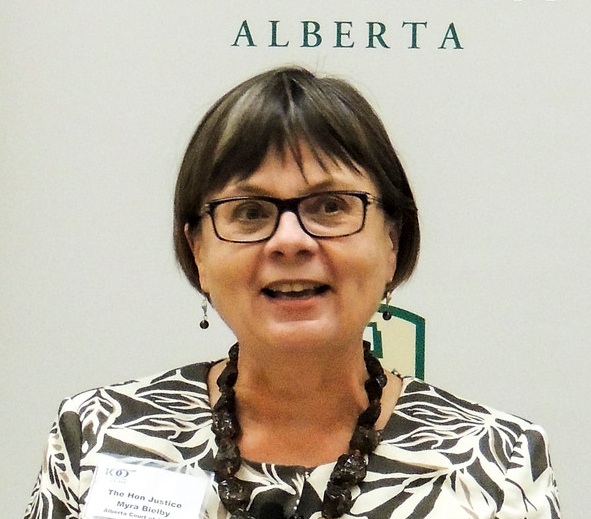By trying to ensure the boundaries of Alberta’s 87 electoral districts are reviewed in an orderly and responsible way, the province’s Electoral Boundaries Commission risks putting the bureaucratic cart before the democratic horse.
The commission, which by law must review provincial constituency boundaries with population changes in mind by Halloween this year, has scheduled 15 hearings and asked for written submissions from interested Albertans by Feb. 8.
The problem with this well-intentioned arrangement is that Statistics Canada has now set the same date to publish the first population results from its 2016 census.
So, as Duncan Kinney of Progress Alberta pointed out in a letter to his group’s supporters:
“[i]f the commission does not push back its deadline and does not give Albertans the time to analyze and consider the latest census data this first round of written submissions will be of poor quality, of little use to the commission and ultimately a waste of its time and of the time of Albertans who are going to the effort of participating in this critical process.”
Kinney may have overstated the potential impact on the value of submissions somewhat, but the fundamental problem he has identified is real, and the simple solution he proposes makes sense. To wit:
“The commission needs to push back the deadline for written submissions a few weeks to Feb. 28, 2017 in order to give Albertans the necessary time to consider and analyze the latest data and integrate it into their submissions.”
It is an irony that the one part of the process the commission could not control — the part in the hands of a federal agency — is the one part that has gone awry.
Alberta’s Opposition parties are likely to ruthlessly exploit anything that goes wrong for any reason to try to make it appear as if the NDP government of Premier Rachel Notley is trying to gain from the process.
This too is ironic, because history tells us that electoral boundary commissions set up by Alberta conservative governments have a long and sordid history of doing what they can to tilt the playing field in favour of conservative MLAs.
As The Globe and Mail reported, there were many complaints about the partisan nature of the Progressive Conservative government’s approach to electoral boundary changes in 2010, the year of the last review, which seemed to be designed to met the minimum legal requirements while favouring reliably conservative sparsely populated rural ridings.
Liberals and New Democrats “charge that the new boundaries are gerrymandered to favour the PCs, while ignoring urban voters and failing to anticipate population growth over the next decade,” the Globe said, referring to a letter on government letterhead by former Deputy Premier Doug Horner urging commission members to make partisan boundary changes. (Horner later apologized.)
The result of this attitude: Edmonton, which has plenty of progressive voters, got fewer seats than it ought. Rural areas arguably have more. There is also a legacy of crazy riding boundaries, like the toenail-shaped slice of St. Albert appended to the smaller city of Spruce Grove several kilometres away, the riding once represented by Horner as it happens.
However, according to some knowledgeable observers, the problem is not as severe as it once was.
According to the courts, riding populations are not supposed to vary more than 25 per cent — a margin that is far too large. But in Alberta, where the law allows four ridings to exceed those guidelines, that rule could be honoured in the breach.
So, for example, if you live in Dunvegan-Central Peace-Notley, Alberta’s least populous riding, your vote is worth about 2.5 times more than if you live in Calgary North-West. About a quarter of Alberta’s ridings, all in rural areas, have populations substantially below the provincial average. The riding, by the way, is named in part for the current premier’s father.
Government House Leader Brian Mason said 16 years ago the variance should be no more than 10 per cent. He was right then and he’s still right. But with the next Alberta election likely to be hard fought, it shouldn’t take a political science degree to figure out why the present boundary arrangement works for conservatives.
It should come as no surprise that voters in rural ridings — and Wildrose and PC strategists doing the electoral math — are deeply worried about the possibility of a comprehensive and fair redistribution process.
After all, the population of Alberta has grown about 20 per cent in less than a decade and, face it, most of those folks didn’t move to Manyberries, Vegreville or Zama City.
Al Kemmer, president of the Alberta Association of Municipal Districts and Counties, told the Calgary Herald this week his organization fears, in the words of the reporter, “redistribution by population could shift seats from rural to urban, leading to potentially sprawling ridings in the countryside and affecting representation.”
Well, that’s a problem if you buy into the cost-control zeitgeist and decide, as the government apparently has, that there must be no additional seats.
But it’s not as serious a problem as significantly and consistently undervaluing urban votes and pretending democracy is working just fine, as we have long done in Alberta.
The first step to getting this right is making sure Albertans have the most up-to-date information when the make submissions to the five-member commission, headed by Justice Myra Bielby of the Alberta Court of Appeal.
By law, the commission’s chair is appointed by the lieutenant governor, two members by the premier and two by the Opposition leader. Members of the Legislature must vote to approve the proposals of the Commission, with or without amendments, before they can be implemented.
This post also appears on David Climenhaga’s blog, AlbertaPolitics.ca.
Like this article? Please chip in to keep stories like these coming.




